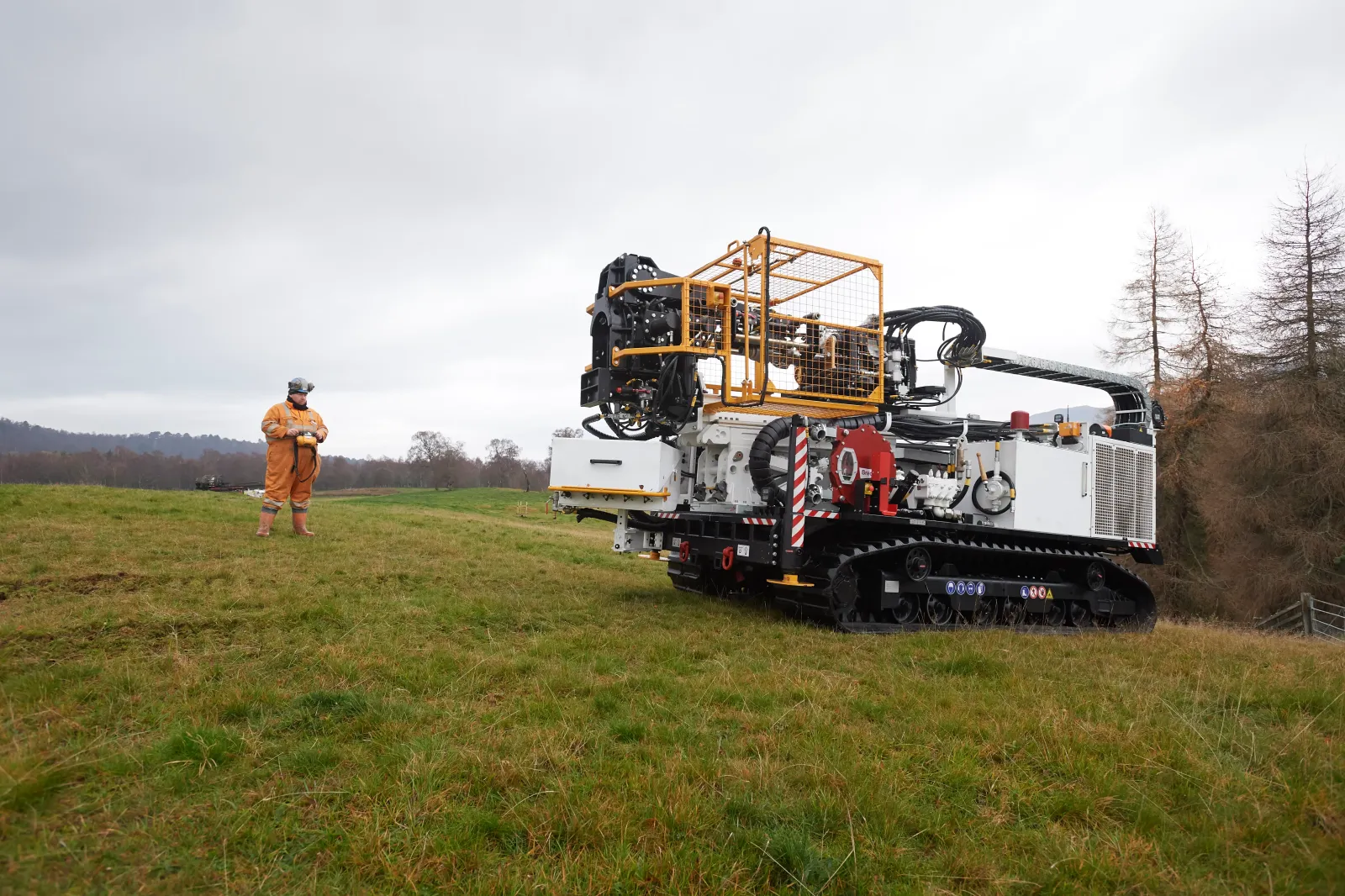
Drilling And Probing
Why drilling and probing are used when undertaking site investigation
Site investigation is the process of gathering information about the ground conditions at a proposed development site. This information is used to design safe and economical foundations and other structures, and to identify any potential risks or hazards.
Drilling and probing are two of the most common methods used in site investigation. Drilling involves creating a hole in the ground to collect samples of soil and rock. Probing involves using a variety of tools to measure the strength and stiffness of the ground.

Drilling
Uses
Drilling is used in site investigation to:
- Obtain samples of soil and rock for inspection, description, and identification purposes.
- Obtain samples of soil and rock for laboratory testing. This testing can be used to determine the properties of the ground, such as its strength, stiffness, and permeability.
- Determine the depth and thickness of different soil and rock layers. This information can be used to design foundations and other structures.
- Identify any potential risks or hazards, such as underground cavities or contaminated ground.
Types
There are a variety of different drilling methods, each of which is suited to different ground conditions. Some of the most common drilling methods used in site investigation include:
- Sonic drilling is a way to drill that uses resonant energy to reduce friction and make it easier to drill through different types of soil. It is often used when drilling is difficult or when it is important to get a good sample of the soil.
- Percussion drilling uses a heavy weight to drive a drill bit into the ground. It is often used to drill through hard or dense soils.
- Rotary drilling uses a rotating drill bit to bore into the ground. It is often used to drill through soft or medium-dense soils.
- Wash boring uses a jet of water to flush soil cuttings out of the borehole. It is often used to drill through waterlogged or sandy soils.
- Core drilling uses a hollow drill bit to extract a cylindrical core of soil or rock. This core can then be tested to determine the properties of the ground.
Probing
Uses
Probing is used in site investigation to:
- Measure the strength and stiffness of the ground. This information can be used to design foundations and other structures.
- Identify any potential risks or hazards, such as underground cavities or contaminated ground.
Methods
Some of the most common probing methods used in site investigation include:
- Dynamic probing: This method uses a weight to drive a cone into the ground. The resistance of the ground to the cone is measured and used to assess the strength of the ground.
- Cone penetration testing (CPT): This method uses a cone attached to a series of rods to push into the ground. The resistance of the ground to the cone and the friction on the rods are measured and used to assess the strength and stiffness of the ground.
- Standard penetration testing (SPT): This method uses a split spoon sampler to collect samples of soil and measure the resistance of the ground to the sampler. The number of blows required to drive the sampler a certain distance is used to assess the strength of the ground.
Why are drilling and probing so important in site investigation?
Without drilling and probing, it would be impossible to get a comprehensive understanding of the ground conditions at a site.
This could lead to problems with the construction of the development, such as foundation failure or unexpected ground movement.
If you are planning a development project, it is important to undertake a comprehensive site investigation. This will ensure you have the information you need to make informed decisions about the design and construction of your project.
Let’s look more closely at the drilling and probing services Igne offers as part of its site investigation offering:
Sonic Drilling
Sonic drilling uses high frequency vibration to produce resonant energy to allow tooling to pass through the ground with highly reduced friction. It is often used to collect soil and rock samples for geotechnical analysis. Sonic drilling is also used to install monitoring wells, boreholes, and other geotechnical instrumentation.
It is a versatile method of drilling that can be used in a variety of soil and rock conditions. It is particularly well-suited for drilling in sensitive environments, such as urban areas and near wetlands. Sonic drilling is also a relatively quiet method of drilling, which makes it ideal for use in areas where noise is a concern.

How it works
How does sonic drilling work?
It works by using resonance to break up soil and rock. A sonic drill head energises the drilling tools which are then lowered into the ground and vibrates at a high frequency. The vibrations cause the soil and rock to break up and loosen. The loosened soil and rock are then removed from the borehole using a variety of core barrels.
Sonic drilling can be used to drill in a variety of soil and rock conditions, including:
- Sand
- Gravel
- Clay
- Silt
- Shale
- Limestone
- Sandstone
Sonic drilling is also well-suited for drilling in sensitive environments, such as:
- Urban areas
- Near wetlands
- Near streams and rivers
- Near historical sites
Discover the benefits
What are the benefits of sonic drilling?
Sonic drilling offers several benefits over other types of drilling, including:
- Versatility: sonic drilling can be used to drill in a variety of soil and rock conditions. It is also well-suited for drilling in sensitive environments.
- Speed: sonic drilling is a relatively fast method of drilling.
- Accuracy: it is a very accurate method of drilling. This is important for collecting soil and rock samples for geotechnical analysis.
- Certainty: sonic drilling is not subject to refusal and will penetrate all formations.
- Quietness: it is a relatively quiet method of drilling. This makes it ideal for use in areas where noise is a concern.
At Igne we use sonic drilling in a variety of applications, including:
- Geotechnical analysis: we use it to collect soil and rock samples for geotechnical analysis. This data is used to design foundations, slopes, retaining walls, and other structures.
- Monitoring wells: we install monitoring wells to monitor groundwater levels and quality.
- Boreholes: sonic drilling is also used to install boreholes for geotechnical instrumentation, such as inclinometers and piezometers.
- Environmental site assessment: we use it to collect soil and rock samples for environmental site assessment. This data is used to assess the risk of contamination and to develop remediation plans.
Igne’s LS 250 Rota-Sonic drilling rigs
Igne owns 5 No. LS 250 Rota-Sonic drilling rigs, capable of achieving depths in excess of 80m below ground level (depending on ground conditions) as well as at angles between 45⁰ and 90⁰.
The sampling system utilitised by the LS 250 rig ensures that all materials are retained within the core barrel before direct extrusion into sample liners at surface. This is ideal when working with contaminated materials and ensures each working area remains clean and clear of potential contaminants and reduces exposure to the workforce.
The LS 250 rigs are designed to continue a borehole by rotary drilling methods once rockhead has been reached. This negates the requirement to mobilise additional conventional rotary drilling plant and personnel to site. The rigs are setup to core through rock using either conventional or wire-line rotary drilling methods therefore offering the opportunity of capturing the entire geological stratigraphy within the borehole. To maximise the locations available to the sonic rig, the LS 250s are mounted on wide rubber tracks and supported by LGP Morooka vehicles.
Unearth sonic precision: dive into sonic drilling excellence with Igne!
Email: hello@igne.comCall: 0371 789 1000
Rotary Boreholes
Rotary borehole drilling is a versatile drilling method used to create cylindrical holes in the ground for a variety of purposes, including geotechnical investigations, environmental monitoring, and water well construction. At Igne, we offer a comprehensive range of rotary borehole services to meet the needs of our clients in a variety of industries.
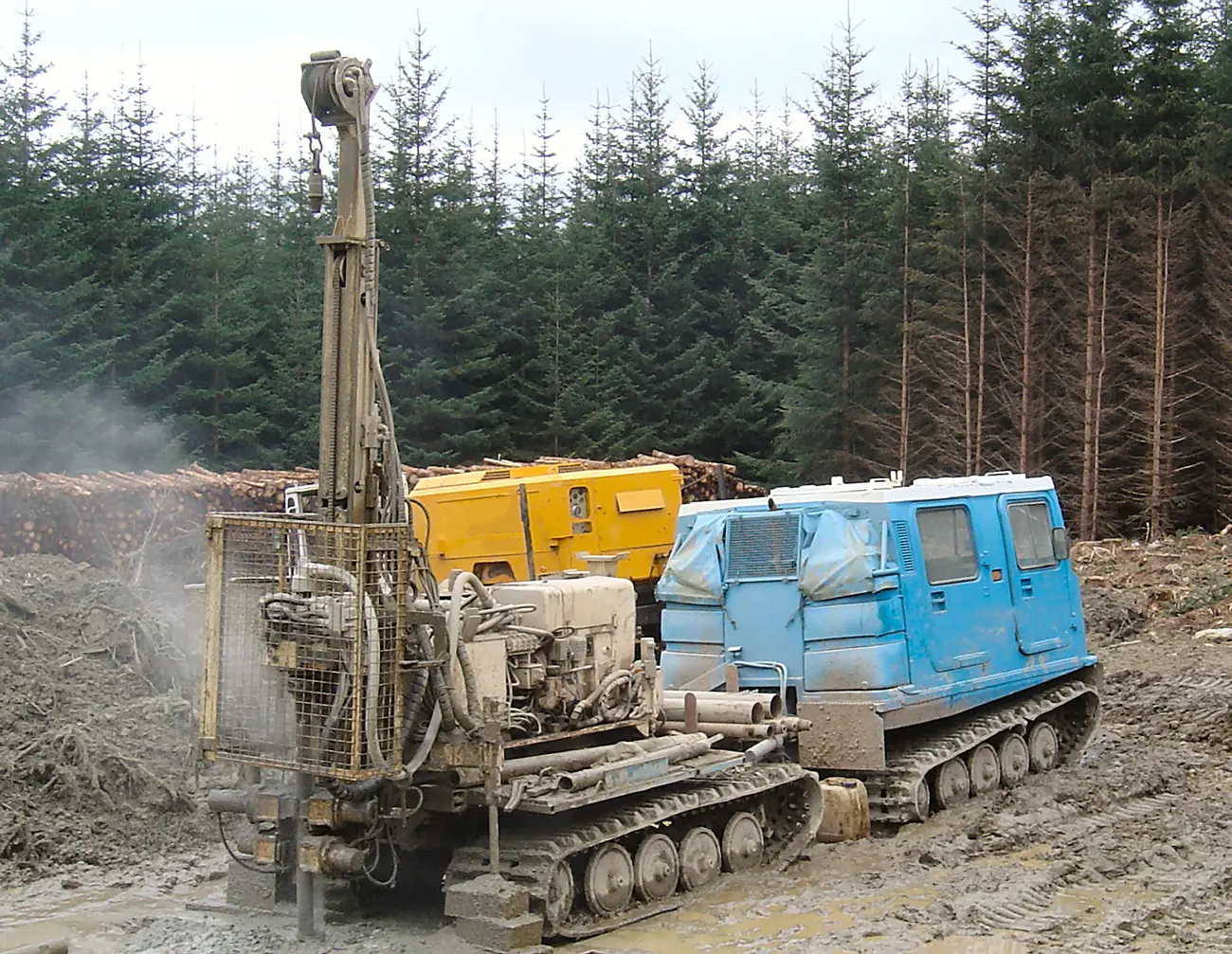
What it is
What is rotary borehole drilling?
Rotary borehole drilling uses a rotating drill bit to excavate the ground. The drill bit is attached to a drill string, which is rotated by a powerful motor. As the drill string rotates, the drill bit cuts into the ground, creating a hole.
Rotary borehole drilling can be used to drill through a variety of materials, including soil, rock, and concrete. The type of drill bit used will depend on the material being drilled. For example, tricone drill bits are commonly used to drill through soil and soft rock, while diamond drill bits are used to drill through hard rock.
Types
Types of rotary borehole drilling
There are two main types of rotary borehole drilling:
- Rotary open hole drilling: This type of drilling is used to create holes that are not lined with casing. Rotary open hole drilling is typically used for geotechnical investigations and environmental monitoring.
- Rotary core drilling: This type of drilling is used to create holes that are lined with casing and to collect core samples. Rotary core drilling is typically used for geotechnical investigations and mineral exploration.
This work can be undertaken at various diameters, either using conventional or wireline (Geobor S) techniques.
Uses
Applications of rotary borehole drilling
Rotary borehole drilling is used in a wide variety of applications, including:
- Geotechnical investigations: Rotary borehole drilling is used to collect soil and rock samples for geotechnical testing. This information is used to assess the suitability of a site for construction and to design foundations and other structures.
- Environmental monitoring: Rotary borehole drilling is used to install groundwater monitoring wells and soil vapor monitoring probes. These wells and probes are used to monitor the quality of groundwater and soil vapor.
- Water well construction: Rotary borehole drilling is used to construct water wells. Water wells are drilled to access groundwater for drinking, irrigation, and other purposes. Explore Igne’s dedicated water well section for more information.
- Mineral exploration: Rotary core drilling is used to collect core samples from mineral deposits. These core samples are analysed to determine the type and grade of the mineral deposit.
The information obtained can provide design parameters for foundations, excavations, cuttings and tunnel construction. In addition, highlight the presence of near-surface mineral workings (in accordance with CMRAs).
Advantages
Benefits of rotary borehole drilling
Rotary borehole drilling has a number of benefits, including:
- Versatility: Rotary drilling can be used to drill through a variety of materials, including soil, rock, and concrete.
- Efficiency: Rotary drilling is a relatively efficient method of drilling.
- Accuracy: Rotary drilling can be used to drill holes to precise depths and diameters.
- Safety: it is a relatively safe method of drilling, especially when compared to other drilling methods, such as percussion drilling.
- Flushing: Different flushing mediums (water, air, mist, mud, foam etc.) can be used dependant on the anticipated geology. A variety of core bits are available to ensure efficient recovery of all rock types.
Revolutionise your research with Igne's rotary borehole services. Contact our team of experts today.
Email: hello@igne.comCall: 0371 789 1000
Cable Percussion Drilling
Cable percussion drilling (CP) is another versatile and efficient method of drilling boreholes for geotechnical investigations. It is particularly well-suited for drilling through challenging ground conditions, such as hard clays, silts, and sands.
At Igne, we offer a comprehensive range of cable percussion drilling services to meet the needs of our clients in a variety of industries. Our services include:
- Standard CP drilling: This type of drilling is used to create boreholes up to 50 meters deep. It is typically used for geotechnical investigations and environmental monitoring.
- Deep CP drilling: This type of drilling is used to create boreholes deeper than 50 meters. It is typically used for geotechnical investigations and mineral exploration.
- Weak rock drilling: This type of drilling is used to create boreholes in weak rock strata. It is typically used for geotechnical investigations and water well construction.
Our in-house drilling crews are some of the most experienced in the industry and they regularly bore to depths in excess of 40 metres in extremely challenging ground.
Igne is a leading provider of cable percussion drilling services. We have a team of experienced and qualified drillers who use state-of-the-art drilling equipment. We are committed to providing our clients with high-quality services that meet their specific needs.
If you are looking for a reliable and experienced cable percussion drilling contractor, contact Igne today. We offer free consultations and estimates
Window Sampling Boreholes
Window sampling boreholes are a type of site investigation technique that involves drilling small diameter holes into the ground to collect soil samples. The holes are typically lined with a clear plastic tube, which allows the soil to be inspected visually before being sampled.
Window sampling boreholes are a versatile and cost-effective method of site investigation. They can be used to investigate a wide range of ground conditions, including soft soils, clays, and silts. They are also particularly well-suited for use in difficult access situations, such as confined spaces or areas with overhead obstructions.
The technique is routinely used for sampling and on-site testing of fine grained cohesive and fine to medium granular soil materials to a maximum depth of 10m (routinely 5 to 6m).
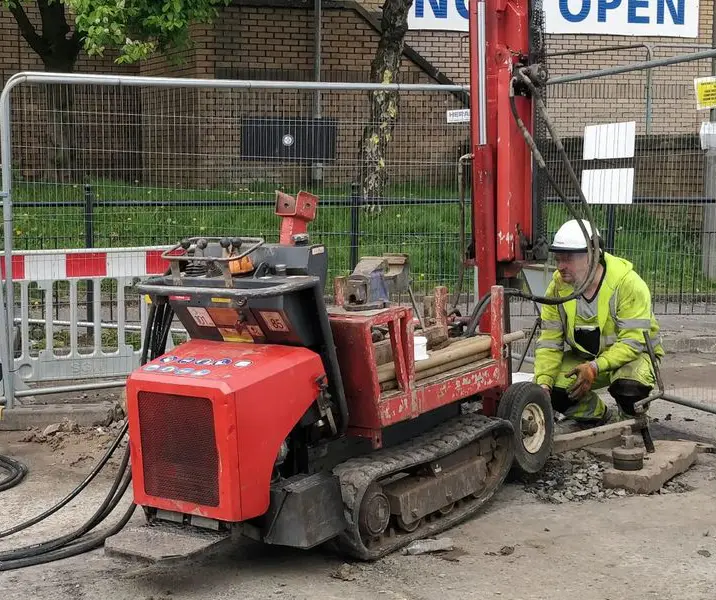
Uses
Applications of window sampling boreholes
Window sampling boreholes are used in a variety of applications, including:
- Geotechnical investigations: Window sampling boreholes are used to collect soil samples for geotechnical testing, which is used to assess the suitability of a site for construction and to design foundations and other structures.
- Environmental monitoring: they are used to install groundwater monitoring wells and soil vapor monitoring probes. These wells and probes are used to monitor the quality of groundwater and soil vapor.
- Contaminated land investigations: Window sampling boreholes are used to collect soil samples for chemical analysis to assess the presence of contamination.
- Archaeological investigations: they are used to collect soil samples for archaeological analysis to identify and assess the presence of archaeological features
Service
Igne’s window sampling borehole services
Igne offers a comprehensive range of window sampling borehole services to meet the needs of our clients in a variety of industries.
Our services include:
- Standard window sampling boreholes: these are typically used to investigate soft soils, clays, and silts to a maximum depth of 10 meters.
- Deep window sampling boreholes: these enable us to investigate ground conditions to a depth of greater than 10 meters.
- Window sampling boreholes in difficult access situations: Igne has a range of specialist equipment that allows us to drill window sampling boreholes in difficult access situations, such as confined spaces or areas with overhead obstructions.
Look beneath the surface. Explore our window sampling borehole services – contact Igne today.
Email: hello@igne.comCall: 0371 789 1000
Pavement and Concrete Coring
Pavement (asphalt) and concrete coring is a process of extracting cylindrical samples from paved surfaces for visual assessment and testing purposes. It is a non-destructive method that allows engineers and scientists to evaluate the condition of a pavement and identify any potential problems.
At Igne, we offer a comprehensive range of pavement and concrete coring services to meet the needs of our clients in a variety of industries. Our services include:
- Standard coring: This type of coring is used to extract samples from paved surfaces up to 10 inches thick.
- Deep coring: This type of coring is used to extract samples from paved surfaces thicker than 10 inches.
- Core testing: We offer a variety of core testing services, including strength testing, density testing, and voiding testing.
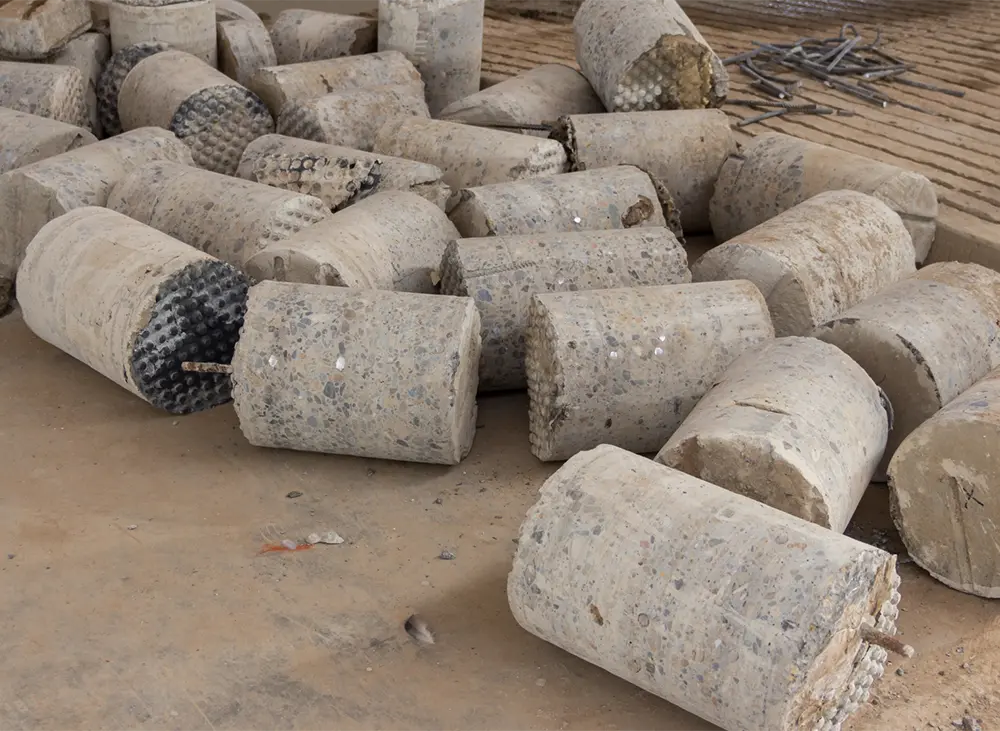
Why we use it
Benefits of pavement and concrete coring
Pavement and concrete coring has a number of benefits, including:
- Accuracy: Coring provides a highly accurate representation of the condition of a pavement.
- Versatility: Coring can be used to sample a variety of paved surfaces, including asphalt, concrete, and brick.
- Efficiency: Coring is a relatively quick and efficient method of sampling paved surfaces.
- Cost-effectiveness: Coring is a relatively cost-effective method of sampling paved surfaces.
How we use it
Applications
- Pavement condition assessments: Coring is used to assess the condition of pavements and identify any potential problems, such as cracking, rutting, and wear.
- Pavement design: data is collected on the properties of pavement materials, which is used to design new pavements and repair existing pavements.
- Quality control: we can ensure that pavements are constructed to the required specifications.
- Research: Coring is used to collect data on the performance of pavement materials and to develop new pavement technologies.
Contact Igne today to learn more about our pavement and concrete coring services and to get a free consultation and estimate.
Email: hello@igne.comCall: 0371 789 1000
Low Ground Pressure Vehicles
Low ground pressure (LGP) vehicles are specially designed to minimize their impact on the ground. They have wide tires and low ground clearance, which helps to distribute their weight over a larger area and reduce the amount of pressure they exert on the ground.
LGP vehicles are particularly well-suited for use in sensitive environments, such as wetlands, marshy areas, and soft ground conditions. They can be used to access remote areas and to transport heavy equipment without causing damage to the ground.
At Igne, we operate a fleet of 22 LGP vehicles, including 20 Morooka and 2 Hagglund BV vehicles. We can mount a variety of rigs to our LGP vehicles, including sonic rigs, rotary rigs, cable percussion rigs, window sampling rigs, and dual-purpose rigs. This allows us to provide a wide range of site investigation and drilling services in sensitive environments.
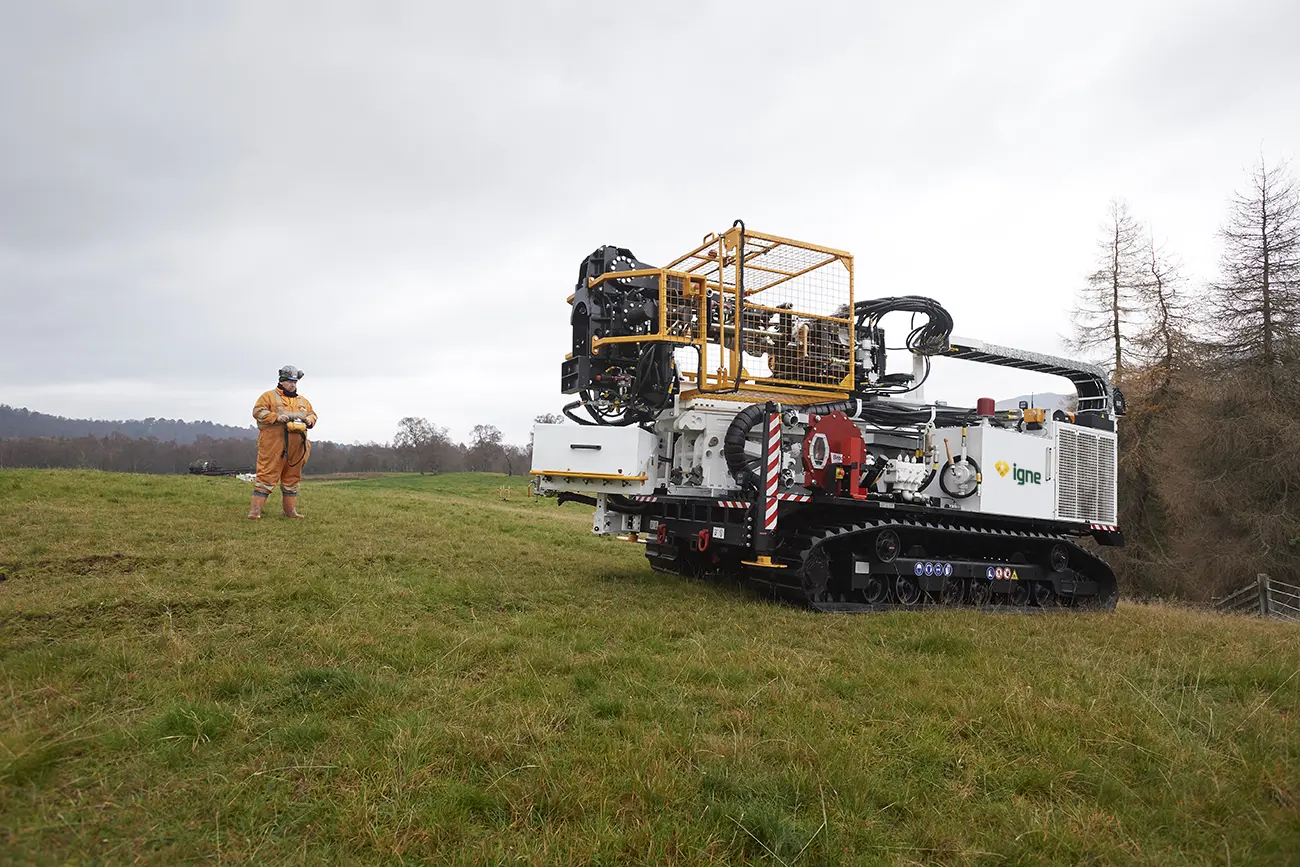
Benefits
Benefits of our low ground pressure solutions
Our low ground pressure solutions provide benefits including:
- Reduced environmental impact: LGP vehicles minimise their impact on the ground, which is particularly important in sensitive environments.
- Increased accessibility: low ground pressure vehicles can access remote areas and soft ground conditions that would be inaccessible to conventional vehicles.
- Reduced site preparation: LGP vehicles require less site preparation than conventional vehicles, which can save time and money.
- Versatility: low ground pressure vehicles can be used to mount a variety of rigs, which makes them suitable for a wide range of site investigation and drilling applications.
Uses
Low ground pressure services are used in a variety of applications
Applications include:
- Site investigations: LGP vehicles can be used to transport drilling rigs and other equipment to remote areas and soft ground conditions. This allows site investigations to be conducted in a wide range of environments.
- Environmental monitoring: LGP vehicles can be used to install groundwater monitoring wells and soil vapor monitoring probes in sensitive environments. This allows for the monitoring of groundwater and soil vapor quality without causing damage to the ground.
- Remediation: LGP vehicles can be used to transport remediation equipment to contaminated sites. This allows for the remediation of contaminated sites without causing further damage to the ground.
Discover Igne's Low Ground Pressure Solutions for Reliable Site Investigation.
Email: hello@igne.comCall: 0371 789 1000
Mechanically Excavated Trial Pits
About
Mechanically excavated trial pits are a type of site investigation technique that involves using a small excavator to dig a hole in the ground to assess the shallow soil conditions. Trial pits are typically up to 4 meters deep, and they can be used to investigate a variety of ground conditions, including soft soils, clays, and silts.
At Igne, we offer mechanically excavated trial pit services to meet the needs of our clients in a variety of industries.
Types
Our services include:
- Standard trial pits: This type of trial pit is typically used to investigate shallow soil conditions up to 4 meters deep.
- Deep trial pits: This type of trial pit is used to investigate shallow soil conditions deeper than 4 meters.
- Trial pits in difficult access situations: Igne has a range of specialist equipment that allows us to excavate trial pits in difficult access situations, such as confined spaces or areas with overhead obstructions.
Trust Igne's mechanical excavated trial pits for accurate data collection. Contact us today.
Email: hello@igne.comCall: 0371 789 1000
Dynamic Cone Penetration (DCP) Tests
About
Dynamic cone penetration (DCP) tests are a type of site investigation technique that involves driving a cone into the ground using a drop weight percussive hammer. The number of blows required to drive the cone a certain distance is recorded, and this data is used to assess the strength and density of the soil.
DCP tests are a relatively simple and inexpensive method of site investigation. They can be used to investigate a wide range of ground conditions, including soft soils, clays, and silts. DCP tests are also particularly well-suited for use in difficult access situations, such as confined spaces or areas with overhead obstructions
Tests
At Igne, we offer DCP tests services to meet the needs of our clients in a variety of industries. Our services include:
- Standard DCP tests: This type of test is used to investigate ground conditions to a depth of up to 1 meter.
- Deep DCP tests: This type of test is used to investigate ground conditions to a depth of greater than 1 meter.
- DCP tests in difficult access situations: Igne has a range of specialist equipment that allows us to perform DCP tests in difficult access situations, such as confined spaces or areas with overhead obstructions.
Ensure quality assessments with Igne's dynamic cone penetration (DCP) tests. Enquire now.
Email: hello@igne.comCall: 0371 789 1000
Restricted or Difficult Access
Site investigation can be challenging in restricted or difficult access situations. For example, it may be difficult to access basements, confined spaces, or built-up areas. However, Igne has significant experience in conducting site investigations in these types of environments.
We have a range of bespoke resources that we can use to access difficult-to-reach areas. For example, we have a low headroom cable percussion rig that can be used in basements with low ceilings. We also have cantilever and mining platforms that can be used to drill over abandoned shafts.
In addition, we have a number of other unique access methods that we can use, depending on the specific requirements of the project.
Hand Excavated Trial Pits
Hand excavated trial pits are a type of site investigation technique that involves manually digging a pit in the ground to assess the shallow soil conditions and to expose existing structures such as building foundations or underground utility services. Trial pits are typically up to 1.2 meters deep, but they can be dug deeper if required.
Hand excavated trial pits are a relatively simple and inexpensive method of site investigation. They can be used to investigate a wide range of ground conditions, including soft soils, clays, and silts. Trial pits are also particularly well-suited for use in difficult access situations, such as confined spaces or areas with overhead obstructions.
The hand excavated trial pitting approach can also be used in combination with other techniques such as diamond coring or probing to supplement their usefulness, particularly with respect to investigations undertaken within building interiors. On-site test procedures can follow.
Uncover valuable insights: opt for Igne's hand excavated trial pits. Learn more.
Email: hello@igne.comCall: 0371 789 1000

